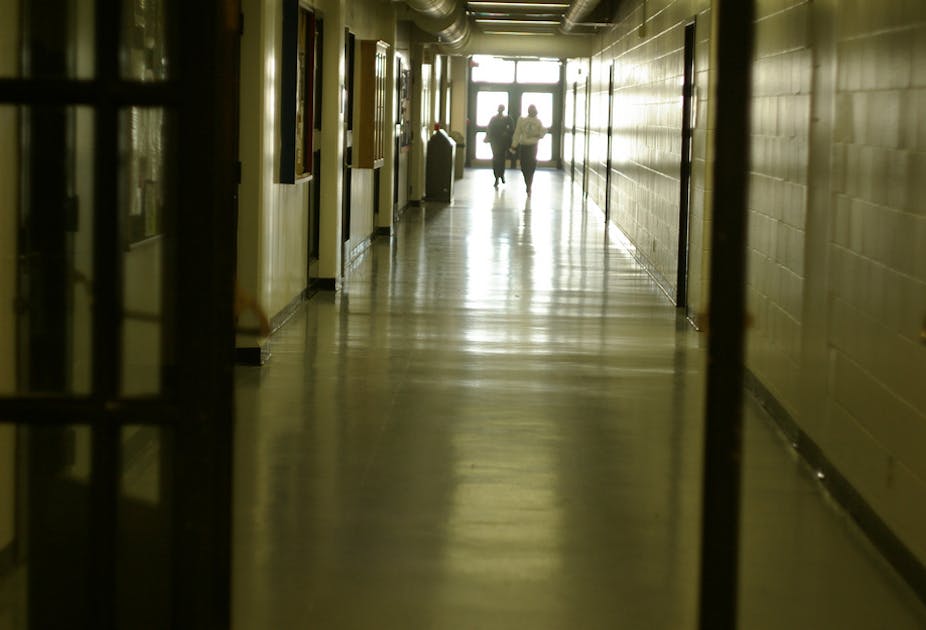Claims that doctors are sectioning mental health patients in order to get them access to beds on psychiatric wards amount to “more than anecdotal evidence”, according to a committee of MPs who have just published a report into the Mental Health Act.
The committee’s report makes for worrying reading for all those involved in mental health services. Pressures on community-based mental health services mean that the number of patients detained under the act are increasing and it’s clear that not everyone should be. In her evidence to the committee, Julie Chalmers, a consultant psychiatrist, said that in some areas “being detained is the ticket to getting a bed”.
Patients can voluntarily be admitted to psychiatric units but pressure on beds is high. Being sectioned puts a legal obligation under the act to get access to a facility.
When are people detained?
The compulsory treatment of people with mental health problem raises fundamental ethical and moral questions. It is one of the few areas of medicine where it is possible to ignore the expressed rejection of treatment by a patient.
The Mental Health Act sets out when someone can be detained and only applied after a certain set of conditions have been met. A person can be held against their will for up to 28 days before further assessment, and in some circumstances up to six months before a decision is made to release of extend detention.
Patients (the act always uses this term even when people are not in hospital) must be assessed by two doctors and an approved mental health professional. The legal grounds for detention are that the person is “suffering from a mental disorder of a nature or degree” that makes such an admission justified and that the admission to hospital is in the interests of the patient’s “health or safety or with a view to the protection of others”.
The guidance issued to professionals carrying out these assessments is clear: compulsory powers should only be used when all other options – including a voluntary admission to hospital - have been explored. The detention of a person is clearly a very serious matter. As well the emotional distress for the patient and their family, it can also have wider impact across individual’s lives including risk to their employment and housing - for example paying the rent. It also puts pressure on places for those who may need it more.
Detention should only be used as a last resort for those most in need.
Operating at capacity
Figures from the Care Quality Commission, which regulates health and social care in England, show that the number of detentions increased by 5% to over 48,000 in 2011-12 from the year before. There is also tremendous pressure on psychiatric inpatient beds; according to the CQC, 15% of wards were operating at a capacity of over 100% - this means that when one patient is discharged another will be admitted the same day.
While some will be desperate, an inpatient ward is not necessarily the best place to be either.
In 2011, a report by the Royal College of Psychiatrists described psychiatric wards as overcrowded and understaffed. Professor Dinesh Bhugra, the college’s outgoing chair, accepted that these failures meant that in-patient care – often imposed against an individual’s will was not of an acceptable standard.
The report showed that wards were often not a safe, let alone therapeutic environment – highlighting poor physical conditions, limited contact with staff or access to psychological therapies and a lack of constructive activity. This has echoes of a survey carried out by mental health charity Mind in London in 2000. Its conclusions paint a picture of dirty wards, poor food, lack of stimulating activities and minimal contact with staff.
The following gives a flavour of its main findings:
30% of patients found the atmosphere on the wards unsafe and frightening.
62% of patients said illegal drugs were easily available on the wards.
16% of patients said they had experienced sexual harassment on the ward, and 72% of those who had complained about this said no action was taken.
That was, of course some years ago. But it is clear that mental health services are still struggling. As Peter Beresford wrote in an article for The Conversation, mental health services are in no fit state.
It is generally accepted that there will be some circumstances in which a person’s mental health has deteriorated to such an extent that the only option will be a form of compulsory inpatient treatment. Only radical libertarians such as psychiatrist Thomas Szasz would oppose such a view. However, the use of any compulsory powers must be limited and there must also be guarantees that this treatment will take place in a safe, therapeutic environment with appropriate community support following discharge from hospital.
The Health Committee’s report outlines a vicious circle that mental health service users and campaign groups have publicised in the past: the lack of well funded community mental health services increases the pressures on inpatient services. In this pincer movement, the rights and dignity of those who need mental health services are seriously compromised.
In the current economic climate, the concern is that community mental services will be seen as soft targets and their budgets reduced significantly. Dorrell said mental health services were more in danger of local healthcare cuts because commissioners thought they were easier to cut than “more politically sensitive acute services”.
The select committee also said that the lack of hospital beds was driving an increase in the number of Community Treatment Orders, supposed to reduce hospital admissions. The whole system is clearly not working and we need to rethink how we deal with those in acute mental health distress.
In particular, community based mental services need strengthening so that hospital admission – whether as a voluntary or formal patient – is only used when all other alternatives have been exhausted.

